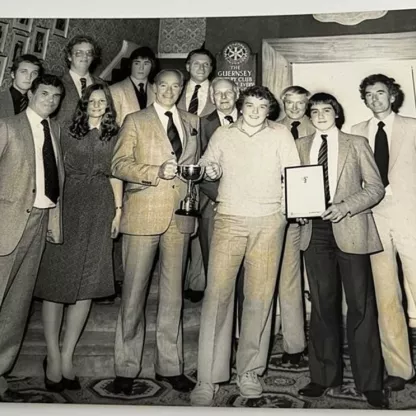Rathbone Global Opportunities fund manager James Thomson explains why he thinks the US economy may turn out to be brighter this year than feared. And can US stocks keep climbing if the economy slows, but doesn’t shrink?

The lights are still on for the US economy
For many, many months, most economists and strategists have been warning that a US recession is in the offing. As the US Federal Reserve (Fed) has kept raising interest rates time after time, the consensus view has been that the lagged impact of higher rates, alongside sticky inflation, will keep squeezing away at growth until eventually something breaks.
But the US economy has defied the doomsters and kept on growing pretty nicely. After US GDP grew at a decent clip in the first quarter, it was widely expected the second quarter reading would show a big slowdown. In the event, the data (released last week) was much better than expected. GDP growth actually picked up in the second quarter, rising to 2.4% compared with the first quarter’s 2%.
There’s been other good news too. The US headline rate of inflation fell to 3% in June – its lowest rate since March 2021. That’s raised hopes that the Fed’s latest rise might prove its last. It’s now easier to imagine an economic ‘soft landing’ in which the Fed manages to tame inflation without strangling growth.
But soft landings don’t mean economic nirvana. Most economic indicators look poor, the headlines are scary and company earnings stagnate – just like they do during recessions. The key difference compared with a recession scenario is the labour market, which remains resilient.
Many economists are sceptical, insistent that the full impact of much higher borrowing costs comes through with up to 18-month lags. So far, it seems as if the US jobs market is rebalancing without too much pain: yes, the number of job vacancies is falling, but there hasn’t been a big spike in the number of people losing their jobs. And fewer job openings may help ease inflationary pressures by curbing wage growth. If a significant rise in unemployment can be avoided, then I think a US soft landing can be engineered and the most widely anticipated recession of all time might just be avoided.
Will more stocks follow the Magnificent Seven’s lead?
US stocks have been rallying quite significantly this year: the S&P 500 has risen almost 20%. Of course, there’s been a lot of noise about the narrowness of this rally. Most of this year’s returns have been driven by the so-called ‘Magnificent Seven’: Alphabet, Amazon, Apple, Meta, Microsoft, Nvidia and Tesla. (We own five of them: we don’t own Meta or Tesla.) Pessimists claim this market concentration means the rally isn’t built on solid foundations. We agree that widespread corporate earnings growth is hard to find… but, perversely, growth investing outperforms when this is the case.
I’m bullish about the prospects for companies that show they can deliver resilient, reliable and repeatable growth. But I recognise that even if the US dodges an outright recession, things are turning more recession-ish. This means I’m continuing to build up exposure in my fund to a broad and balanced spread of growth stocks spanning both defensive and cyclical industries.
This includes under-the-radar companies, like American bug collector Rollins. Even when times are tough, people will pay up to get rid of termites and cockroaches – and global warming, unfortunately, is bringing new pests to places that were once less buggy. As a result, Rollins is benefiting from healthy demand. The fact that more than 80% of its revenues come from recurring contracts should further boost its recession resilience.
We’re also investing in quite a few household names whose full growth potential we think is underappreciated. These include McDonald’s. The fast-food chain knocked analyst expectations out of the park when it released its second-quarter earnings results last week: its earnings almost doubled Q2 2022 as consumers traded down from more expensive eating-out. The chain is rolling out new stores at pace.
Despite its jaw-dropping recent performance, we believe that chipmaker Nvidia belongs firmly in the unrecognised growth potential camp. It’s got plenty of critics who claim it’s a flash-in-the-pan beneficiary of current AI mania. We disagree and see it as stock for the long term given the extent to which the AI-powering technology could disrupt the status quo.
Is there any way of measuring that potential? Look back 20 years or so when the last huge advances in computing power reshaped virtually everything.
New York Times columnist Thomas Friedman has called that moment (the launch of the iPhone alongside big leaps forward in microchips, software, networking and storage) a technology “supernova” that released quite extraordinary energy. In his 2016 book Thank You for Being Late: An Optimist’s Guide to Thriving in the Age of Accelerations, he illustrates just how phenomenal this energy has proved by noting, “Intel engineers did a rough calculation of what would happen if a 1971 Volkswagen Beetle improved at the same rate as microchips… Today, that Beetle would be able to go about three hundred thousand miles per hour. It would get two million miles per gallon of gas; and it would cost four cents!”
We think the advent of the AI-computing revolution could prove a similarly momentous inflection point – and Nvidia is in the sweet spot to reap a lot of its rewards.
Meanwhile, there are tentative signs that the US stock market’s narrow rally has begun to widen out. US stocks recorded their longest monthly winning streak in two years during the course of July and it wasn’t just the Magnificent Seven that notched up decent gains. As long as the economy slows less than many are still expecting, recession fears may dim further – and stocks might just keep on climbing.









